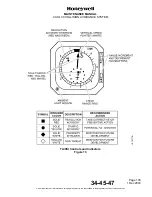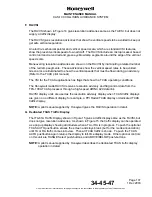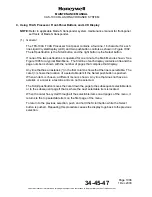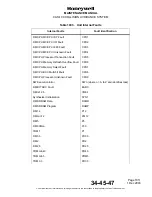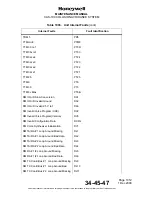
Page 1001
1 Dec 2003
34-45-4
7
MAINTENANCE MANUAL
CAS-100 COLLISION AVOIDANCE SYSTEM
Use or disclosure of information on this page is subject to the restrictions in the proprietary notice of this document.
TESTING AND FAULT ISOLATION
1. General
Fault isolation is the function to find the source of a TCAS failure at the assembly level (black box
level) or the aircraft wiring level. Fault isolation for CAS-100 includes the performance of TCAS
functional tests and the inspection of the TCAS failure indicators. Then the fault isolation includes
the performance of applicable removal and replacement, or the aircraft wiring repair procedures
to correct the problem.
CAS-100 failures can be indicated by the failure annunciations on the PPI Radar/TCAS display or
dedicated traffic display unit CRT. The failures are also shown by an electro-mechanical fail flag
on the RA/VSI unit, and failure indicator lamps on the front panels of the TCAS components.
TCAS failures are sensed, and the applicable failure indicator is started. The failure indicator is
started as a result of full-time TCAS Built-In-Test Equipment that monitors and because of
manually started TCAS Functional Self-Test monitoring.
Fault isolation is usually done on the ground, as a result of failures shown during post-installation,
preflight testing, or malfunctions that were seen during the flight operation.
2. Fault Isolation
A. General
The TCAS processor can find the malfunctions of the TCAS components that decrease or
prevent possible collision avoidance protection. The Mode S transponder can find the
malfunctions in the Mode S transponder system that decrease usual TCAS functions. During
a transponder system failure, the transponder causes the transponder FAIL or ATC FAIL
indicator on the control unit to light. The transponder also communicates the failure status to
the TCAS processor. A failure of the Mode S or TCAS system during usual operation causes
these effects by the TCAS processor:
•
Gives an indication to the flight crew that an unusual condition exists.
•
Causes Mode S transmissions that report own aircraft status to show that own aircraft
has no on-board resolution capability.
•
Prevents interrogations by own aircraft TCAS.
•
Stops the usual TCAS display functions.
NOTE:
Refer to pilot manual for specified failure indications that show on
TA/VSI,
RA/VSI, dedicated TCAS traffic display, etc.







